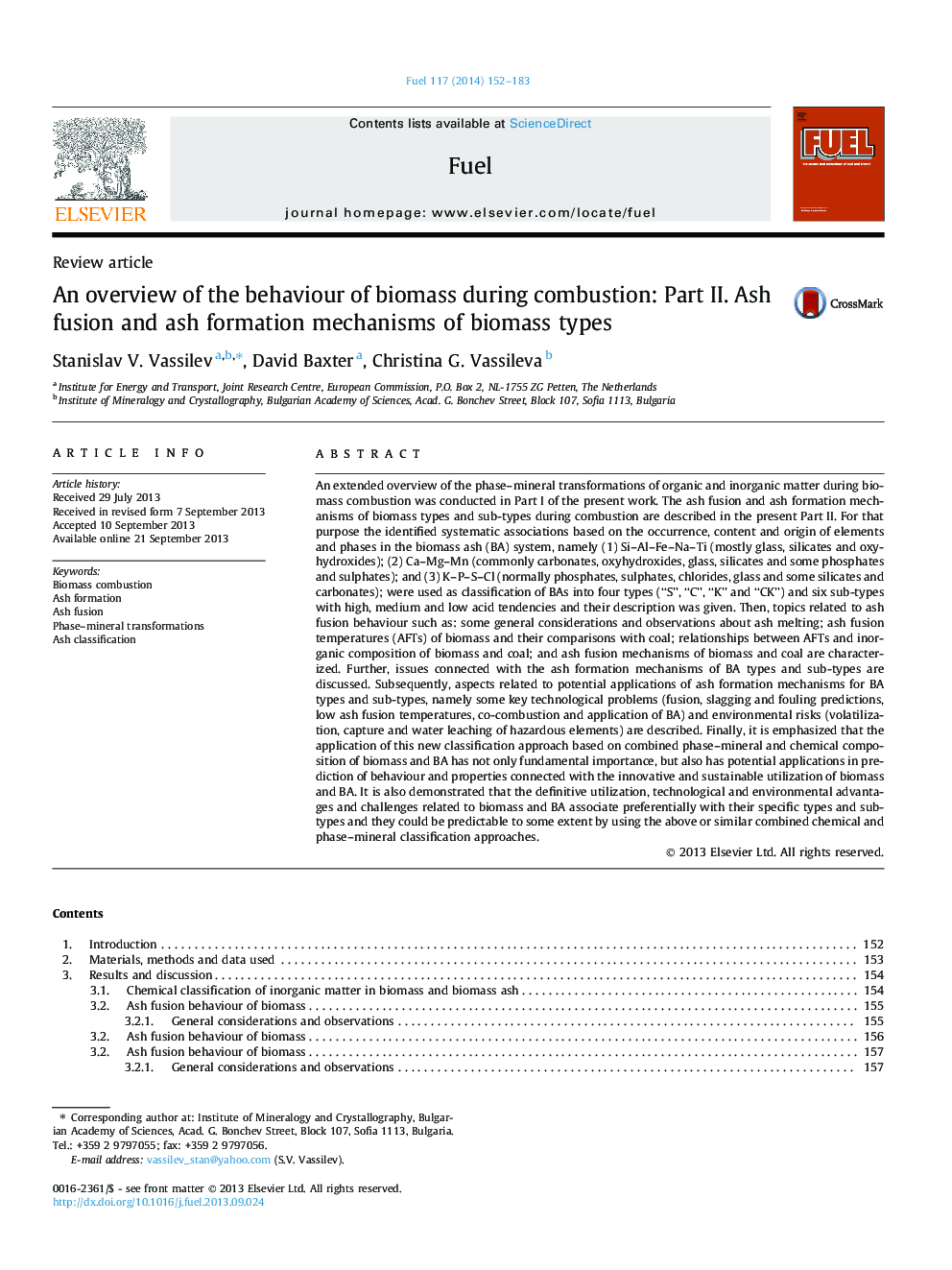| کد مقاله | کد نشریه | سال انتشار | مقاله انگلیسی | نسخه تمام متن |
|---|---|---|---|---|
| 10271873 | 461157 | 2014 | 32 صفحه PDF | دانلود رایگان |
عنوان انگلیسی مقاله ISI
An overview of the behaviour of biomass during combustion: Part II. Ash fusion and ash formation mechanisms of biomass types
ترجمه فارسی عنوان
خلاصه ای از رفتار بیوماس در هنگام احتراق: قسمت دوم. مکانیزم های تشکیل همجوشی خاکستر و خاکستر از انواع بیوماس
دانلود مقاله + سفارش ترجمه
دانلود مقاله ISI انگلیسی
رایگان برای ایرانیان
کلمات کلیدی
احتراق زیست توده، شکل گیری خاکستر، همجوشی اشباع، فاز انتقال مواد معدنی، طبقه بندی خاکستری،
موضوعات مرتبط
مهندسی و علوم پایه
مهندسی شیمی
مهندسی شیمی (عمومی)
چکیده انگلیسی
An extended overview of the phase-mineral transformations of organic and inorganic matter during biomass combustion was conducted in Part I of the present work. The ash fusion and ash formation mechanisms of biomass types and sub-types during combustion are described in the present Part II. For that purpose the identified systematic associations based on the occurrence, content and origin of elements and phases in the biomass ash (BA) system, namely (1) Si-Al-Fe-Na-Ti (mostly glass, silicates and oxyhydroxides); (2) Ca-Mg-Mn (commonly carbonates, oxyhydroxides, glass, silicates and some phosphates and sulphates); and (3) K-P-S-Cl (normally phosphates, sulphates, chlorides, glass and some silicates and carbonates); were used as classification of BAs into four types (“S”, “C”, “K” and “CK”) and six sub-types with high, medium and low acid tendencies and their description was given. Then, topics related to ash fusion behaviour such as: some general considerations and observations about ash melting; ash fusion temperatures (AFTs) of biomass and their comparisons with coal; relationships between AFTs and inorganic composition of biomass and coal; and ash fusion mechanisms of biomass and coal are characterized. Further, issues connected with the ash formation mechanisms of BA types and sub-types are discussed. Subsequently, aspects related to potential applications of ash formation mechanisms for BA types and sub-types, namely some key technological problems (fusion, slagging and fouling predictions, low ash fusion temperatures, co-combustion and application of BA) and environmental risks (volatilization, capture and water leaching of hazardous elements) are described. Finally, it is emphasized that the application of this new classification approach based on combined phase-mineral and chemical composition of biomass and BA has not only fundamental importance, but also has potential applications in prediction of behaviour and properties connected with the innovative and sustainable utilization of biomass and BA. It is also demonstrated that the definitive utilization, technological and environmental advantages and challenges related to biomass and BA associate preferentially with their specific types and sub-types and they could be predictable to some extent by using the above or similar combined chemical and phase-mineral classification approaches.
ناشر
Database: Elsevier - ScienceDirect (ساینس دایرکت)
Journal: Fuel - Volume 117, Part A, 30 January 2014, Pages 152-183
Journal: Fuel - Volume 117, Part A, 30 January 2014, Pages 152-183
نویسندگان
Stanislav V. Vassilev, David Baxter, Christina G. Vassileva,
